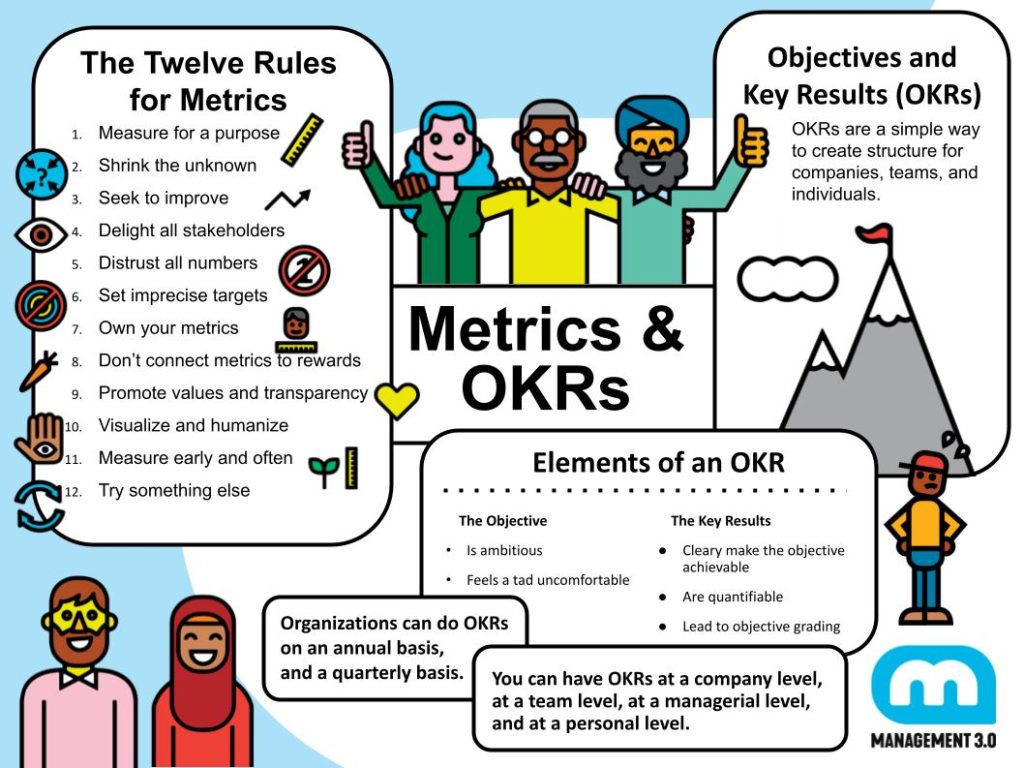
OKRs are a simple way to create structure for companies, teams, and individuals. The secret sauce when it comes to OKRs is to make them very ambitious. That way OKRs enable individuals and teams to focus on the bigger picture and to achieve more than they thought they would.
OKRs encourage a result and value oriented culture by focusing on the main priorities. It also increases the autonomy level and boosts self-organization. What are the difference between KPIs and OKRs? KPIs are defined by a manager, OKRs are self-chosen and self-driven.
OKRs are a mix of the PDCA cycle, stretch goals, SMART goals, the Lean Startup method and Management by Objectives. Basically, it’s all of them wrapped up in one agile management practice.
Read on in our blog
Let’s look into the single parts of the OKRs.
The Objective
- The What (Where do I want to go?)
- Purpose-driven
- Qualitative goal
- Is ambitious
- Feels a tad uncomfortable
- Not measurable, gives freedom to act
The Key Results
- The How (How will I pace myself to see if I’m getting there?)
- Clearly make the objective achievable
- Are quantifiable
- Specific and time bound, aggressive and realistic, and measurable and verifiable
- Lead to objective grading
- Linked loosely
No metric is perfect, and it’s best to look at each problem from multiple angles.
The practice of OKRs is introduced within our Metrics & OKRs module.
How to apply OKRs?
Each objective consists of three to four measurable key results whereby each key result has a progress indicator or a score of 0-100%.
Organizations can do OKRs on an annual basis and a quarterly basis. The annual OKR is a big, umbrella idea for the year and it’s not set in stone, it can evolve as the year goes on. The quarterly OKRs do not change. You can have OKRs at a company level, at a team level, at a managerial level and at a personal level. They all work together to keep the company on track. They challenge the organization on all levels. OKRs are not used by management to determine promotions or salaries.


